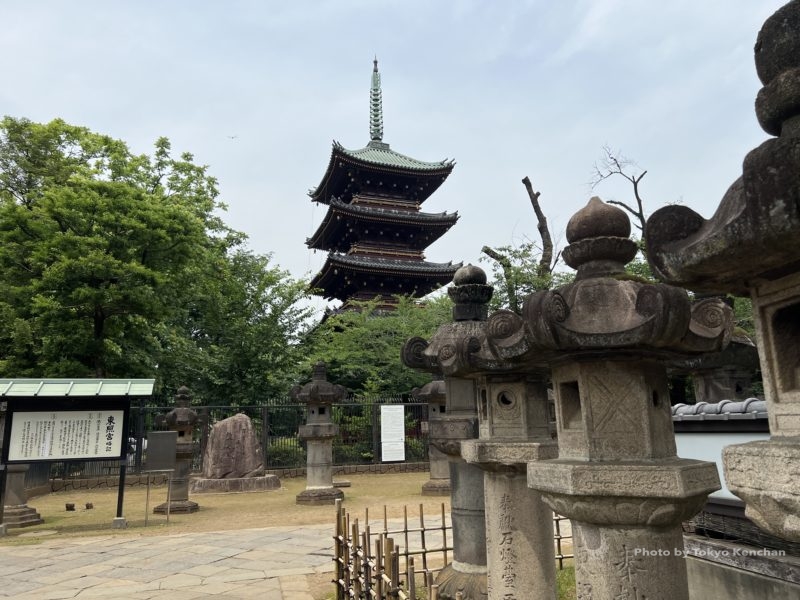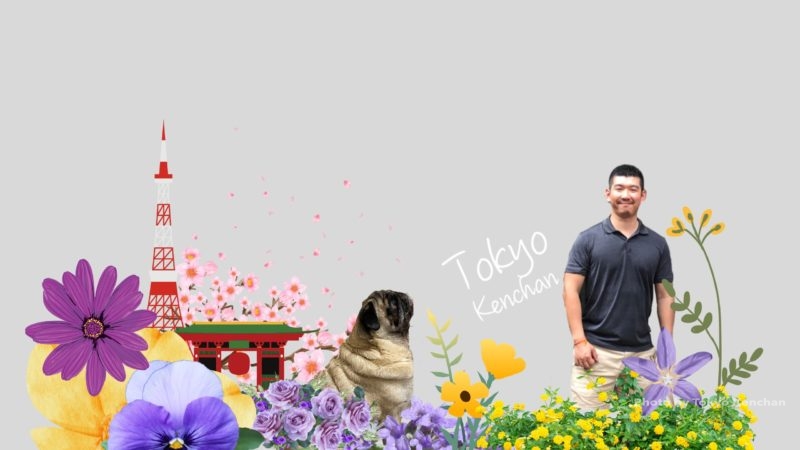UENO, TOKYO Neighborhood Guide – How to enjoy Ueno Park and around
Tokyo is full of fun and unique neighborhoods, and Ueno is probably near the top of the list of tourist’s destination.
What kind of Area Ueno is?
Ueno Park was the site of the vast Kan’ei-ji Temple in the Edo period, and even today there are some temples remain. There are several zoos and museums in the park.
In addition, between Okachimachi Station there is a lively shopping street such as Ameyoko, and there are countless restaurants and grocery stores. There are many attractions in Ueno, such as the relaxed atmosphere of the park and the lively shopping street.
Please also watch my YouTube video about UENO, Tokyo.
A Must See Area in Tokyo for Sightseeing – What’s in Ueno, Tokyo
Where is Ueno?
Ueno is four stops north of Tokyo Station, and Asakusa is three stops east on the Tokyo Metro Ginza Line.
From Shinjuku, you can also take Oedo Line which goes to Ueno Okachimachi station.
History and Story of Ueno
The majority of Ueno Park used to be a part of Kaneiji Temple which was protecting the north east of Edo castle, but when the Edo Period finishes, the last shogun escaped from Edo Castle, and the most of Kaneiji Temple burned down.
Now the most of the land became Ueno Park. Now you see the temples that could avoid the fire, and also many museums in the area.
Ueno Zoo
* As of November 2021, Ueno Zoo requires advance reservations. Other facilities may be closed, so please check in advance.
For Japanese people, it might be the strong impression of zoo when it comes to Ueno because it’s a place where people from Tokyo area are taken to once when they are children. The panda has become a symbol of Ueno as a whole.
Shinobazu Pond and boat dock

There are several places in Tokyo where you can ride a boat, one of which is Shinobazu Pond. You can spend a leisurely time in a place of relaxation in the city. Boats on Shinobazu Pond cost 500 yen for 30 minutes for low boats and 700 yen for swan boats. (Revised in November 2021)
I also took a low boat and I was able to spend a leisurely time in the unpretentious atmosphere of Ueno, with Tokyo Sky Tree visible when I went out to the center of the pond. Even if you don’t take a boat, you can just take a walk around the lotus-covered Shinobazu Pond. Compared to the area near Ueno Station, there are fewer people, so it may be suitable for those who want to spend a quiet time.
Shrines and temples in Ueno Park

Entrance to Hanazono Inari Shrine in Ueno Park, Tokyo
When you visit a zoo or museum, how about visiting the many shrines and temples in Ueno Park?
Kan’eiji Kiyomizu Kannondo
If you walk through the park from Okachimachi toward Ueno Zoo, the first temple you will see is Kiyomizu Kannondo of Kaneiji Temple. Built in 1694 to imitate Kyoto’s Kiyomizu-dera, it is a national important cultural property. From here you can see all the way to Bentendo on Shinobazu Pond, but there is a considerable difference in elevation.
Shinobazu Pond Benten-do (Bentendo)
Looking down from Kiyomizu Kannon-do, Shinobazu-ike Benten-do is located far below on top of the pond. The current building was rebuilt in 1958. While Kiyomizu Kannon-do was modeled after Kyoto’s Kiyomizu-dera, this Benten-do is modeled after Hogon-ji on Chikubu Island in Lake Biwa. It is located in the center of Shinobazu Pond, and beyond the pond you can see buildings such as the University of Tokyo Hospital on the hills in the direction of Nezu and Yushima.
Gojoten Shrine/Ana Inari Shrine/Hanazono Inari Shrine
In Ueno Park, there is Gojoten Shrine, which is said to have been born in this area 1900 years ago. Anana Inari Shrine is located on the same site as Gojoten Shrine. Open the door on the right and enter the cave.
Ueno Great Buddha (Pagoda)
Even though it’s called Daibutsu, it doesn’t mean that there is a large bronze statue, but rather the face that survived the earthquake and war is enshrined with great care.
Ueno Toshogu Shrine

Pagoda in Ueno Toshogu Shrine
Toshogu is a shrine in Nikko (Northern Tokyo) that is enshrine Ieyasu Tokugawa, who established Edo Period. This shrine was built for the people of Edo who cannot go to Nikko. The existing main hall was built in 1651 and is designated as a national important cultural property.
Museums
Ueno Park is home to national, metropolitan, and private museums and museums, such as the National Museum and the National Museum of Western Art.
National Museum – Japan’s oldest museum

The National Museum of Tokyo in Ueno
Tokyo National Museum. It is the oldest museum in Japan, opened in 1872. Although it is just one of the museums concentrated in Ueno Park, the exhibition area of the Tokyo National Museum is about 18,000 square meters in the entire Ueno building.
National Museum of Western Art
The National Museum of Western Art is located near the park exit of Ueno Station, facing the Tokyo Bunka Kaikan. The National Museum of Western Art itself is one of the buildings around the world that has been registered as a World Heritage Site as an “Architectural Work of Le Corbusier”. There are more than 6,000 works in its collection, of which 1,700 are Daumier’s prints that were transferred from the closed Tobu Museum in Ikebukuro.
International Library of Children’s Literature
The International Library of Children’s Literature is located behind the National Museum from Ueno Station and near Kan’eiji Temple. This Renaissance-style building was built in 1904 as the Imperial Library, and the building itself is worth a visit. Picture books from all over the world are displayed in the museum. There is also a cafeteria inside, so you can spend your time slowly. Admission is free.
Keisei Doubutsuen-mae Station Ruins
Keisei’s old “Dobutsuen-mae” station building. Even now, the Keisei Line passes through this underground between Keisei Ueno Station and Nippori Station, but it is now an abolished station and will pass through. On rare occasions, it may be opened for planning purposes. Currently, if there is a station in this area, I think there will be a lot of demand on holidays, but there seems to be no plans for redevelopment.
Speaking of Ueno, cherry blossom viewing
Speaking of Ueno Park, I think many people imagine cherry blossom viewing. The famous cherry blossom viewing spot is the main route from the park entrance in the direction of Okachimachi to Ueno Zoo. The cherry blossom season is very crowded, Ueno is rather a place to enjoy the scenery while walking around than sitting and watching the flowers as you drink.
Around the Ueno Park
AMEYOKO

Ameyoko is a shopping street that stretches for about 500 to 600 meters on the west side of the elevated bridge between Ueno Station and Okachimachi Station, and is home to many shops and restaurants. I’ve been brought here occasionally since I was a kid and I’m still not sure what the street sells. However, it is very lively, so it is fun just to walk around.
Yanaka – Ueno’s backyard

Yanaka is an area on the north side of Ueno Park with many old shops and temples. It’s right on the north of the park, but not many people walk through this area. Nearby neighborhood of Ueno that you can feel the traditional side of Japan is Asakusa. See Asakusa Neighborhood guide
What to eat in Ueno.
Yoshiike is a restaurant on the top of Yoshiike building in front of Okachimachi store. You can choose from Sushi bar or Japanese dining, you can choose from variety of Japanese foods. It’s easy going and always busy with middle aged to senior customers. No need to rush to eat unlike other small restaurants on the street, so it’s a good rest after or before a long walk in Ueno.
Where to stay in Ueno.
Ueno doesn’t really have major hotels or luxury brand hotels, but you’ll find many business hotels such as Apa, super hotels. There are lots of cheaper small chain business hotels and hostels around this area.
Ueno is fun
Ueno Park is a park full of fun for adults, from shrines and temples to museums. Further temples and cafés dot the small alleys of Yanaka on the north side of the park. For children, there are many fun and intellectually stimulating places such as the zoo, the National Museum of Nature and Science, and the International Library of Children’s Literature. If your mind is too cleansed to settle down, it might be a good idea to let the hustle and bustle of Ameyoko take you on your way home. .
Access to Ueno Park
- 0 minute walk from Ueno Station Park Exit
- 0 minute walk from Keisei Ueno Station
- Ueno-Okachimachi Station (Oedo Line) Directly connected to Keisei Ueno Station via underpass 5 minutes on foot
The easiest way to get to Ueno Park is from the Park Exit of JR Ueno Station. This is an access method that allows you to go to art museums and museums without climbing up and down Ueno Park.
Keisei Ueno Station is located near Okachimachi, a little far from Ueno Station. It’s a little far to transfer, but Keisei Ueno Station is located in Ueno Park, so it’s convenient to go to the park.
Ueno Station on the Tokyo Metro Hibiya Line and Ginza Line is on the Asakusa side, which is the opposite side of Ueno Park, so you will have to walk a little.
Ueno Okachimachi Station on the Toei Oedo Line and Ueno Hirokoji Station on the Ginza Line are several hundred meters south of Ueno Park, below Ueno Matsuzakaya and Parco. You can head to Ueno Park while walking around Ameyoko, or you can go through the underpass.
The articles that might help you to navigate yourself in Tokyo:
The 10 Best Areas of Tokyo for Sight Seeing
How to Get Around Tokyo by Train
For other areas and complete guide of Tokyo, you might enjoy The Complete Travel Guide to Tokyo

Comments